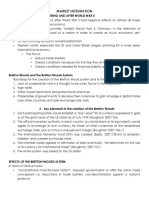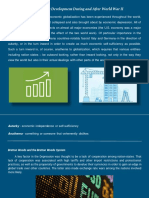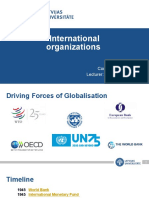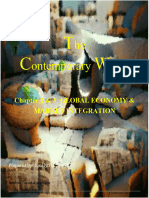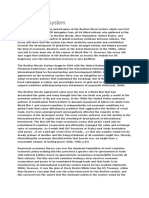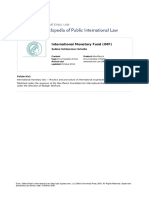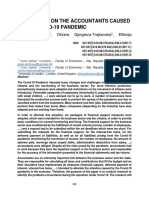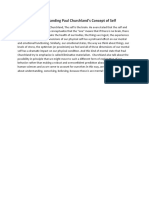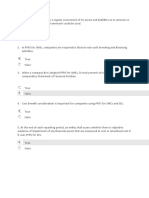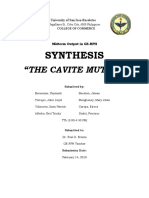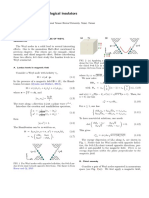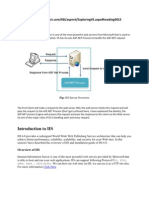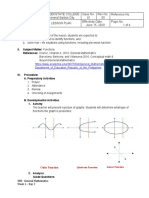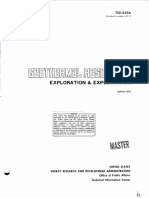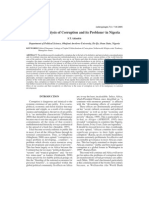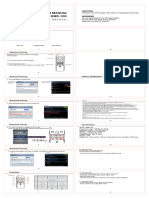1. How did the Bretton Woods conference facilitate globalization?
> The roughly three decades that coincided with the monetary arrangements of the Bretton
Woods system of as a time of relative stability, order, and discipline. Yet considering that it
took nearly 15 years following the 1944 conference at Bretton Woods before the system was
fully operational and that there were signs of instability throughout the era, perhaps not
enough has been made of the relative difficulty in trying to maintain the system. Rather than
seeing Bretton Woods as a period characterized by stability, it's more accurate to consider it
as being a transitional stage that ushered in a new international monetary order that we're still
living with today. The conference produced agreement between 44 government delegations
on the institutional foundations of what became the most durable international system
devoted to economic openness. This system marked a major departure from past
arrangements through the adoption of elaborate international treaties, expansive norms, and
large organizations to govern global economic affairs.
The system reflected a broadly liberal consensus among a growing number of participating
governments on how to regulate economic relations between states around principles of
reciprocity and open markets. By the 75th anniversary of the conference, its two legacy
organizations, the International Monetary Fund (IMF) and the International Bank for
Reconstruction and Development (IBRD), more commonly called the World Bank, registered
nearly universal membership. Others note that the era of using a select few focal
organizations, as was the case after Bretton Woods, is making way for one in which
governance is increasingly fragmented, frequently incoherent, often not formal, and where
plurilateral and minilateral solutions are replacing commitments to multilateralism (e.g.
Buzdugan & Payne, 2016; Grabel, 2017; Luckhurst, 2018).
The Bretton Woods conference looms large in public and academic discourse alike. What
constitutes the ‘Bretton Woods system’ has itself evolved over time. In the early decades
after the conference, it referred narrowly to the fixed exchange rate regime on which
agreement was reached at the conference. After that regime’s demise in the 1970s, the notion
of a ‘Bretton Woods system’ became a synonym for a liberal global economic system in
which legacy organizations from the conference are central to how governments manage
joint affairs.
When policy-makers and scholars speak of ‘Bretton Woods’ reform, as they have with great
regularity, including in responding to the 2008 global financial crisis, they have in mind a
reconstitution of goals and designs with origins in the 1940s (e.g. Brown, 2010; Drezner,
2014; Rodrik, 2012).
Officials such as President Franklin D. Roosevelt and Secretary of State Cordell Hull were
adherents of the Wilsonian belief that free trade not only promoted international prosperity,
but also international peace. The experience of the 1930s certainly suggested as much. The
policies adopted by governments to combat the Great Depression - high tariff barriers,
competitive currency devaluations, discriminatory trading blocs - had contributed to creating
�an unstable international environment without improving the economic situation. This
experience led international leaders to conclude that economic cooperation was the only way
to achieve both peace and prosperity, at home and abroad.
The IMF was charged with the maintenance of a system of fixed exchange rates centered on
the U.S. dollar and gold. A forum for consultation and cooperation, the organization would
contribute to orderly international monetary relations and the expansion of world trade by
providing short-term financial assistance to countries experiencing temporary deficits in their
balance of payments; balance of payments deficits attributable to more long-term structural
factors could be addressed through modification of a country's exchange rate. The IBRD,
meanwhile, was responsible for providing financial assistance for the reconstruction of war-
ravaged nations and the economic development of less developed countries.
The Bretton Woods conference is widely considered the high watermark of successful
international economic cooperation. Conference delegates to what was formally known as the
United Nations Monetary and Financial Conference carefully assessed lessons from the pre
and inter-war periods. With the Great Depression, the failures of the 1933 London Economic
Conference, and the combustible political realities that brought World War II very much on
their minds, delegates used the July 1944 summit to mark a turning point in international
economic affairs. They greatly expanded the use of multilateral formal organizations to
maintain an open global economic system in which barriers were low to commercial
exchange across national borders. They agreed to establish universal formal organizations as
the primary means to oversee an open global economy and agreed that governments would
have significant policy discretion in meeting domestic and international obligations. In this
way, they established a governance arrangement that would isolate the effects of balance-of-
payments crises, reduce the prospect for trade wars, and assist governments in achieving
higher levels of economic development.
References: https://www.tandfonline.com/doi/full/10.1080/09692290.2019.1635513





